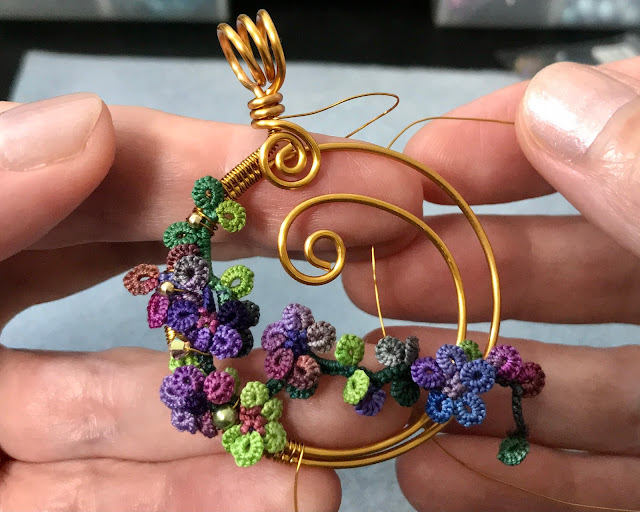How long ago was the last time I prepared a warp for weaving? According to Google photos it was May, 2017, and it stayed on for 3 years. Well, since I only weave out of curiosity, there's no rush to finish, the discovery of "what happens if" is enjoyable in itself. I have not woven with Cottolin yarn (a blend of cotton and linen) before, but I love the bright colors, so this should be fun!
For those interested the loom I'm using is relatively small, a 24 inch wide 8 shaft table loom on a stand. I'm threading a pattern from page 39 in "A Weaver's Book of 8-Shaft Patterns" edited by Carol Strickler.
Also I have started knitting a sweater, for myself. It's an open front cardigan with knitted lace edging designed by Bronagh Miskelly. The pattern is "Spring Leaf" found in Knitting Magazine, April 2017. The yarn I'm using is luxuriously soft, spun from Tibetan Yak hair. My first time using this fiber and I'm loving it! The color is Hokkaido, which is also the name of an island in the north of Japan. To me it looks like a medium toned, muted grayish purple.
Exploring other crafts is refreshing, and can spark new ideas for tatting, also. So do not worry that my tatting or hand dyeing will be neglected. In fact, I have a large batch of skeins already prepared for dyeing next week. The colorway will be "Stardate".























